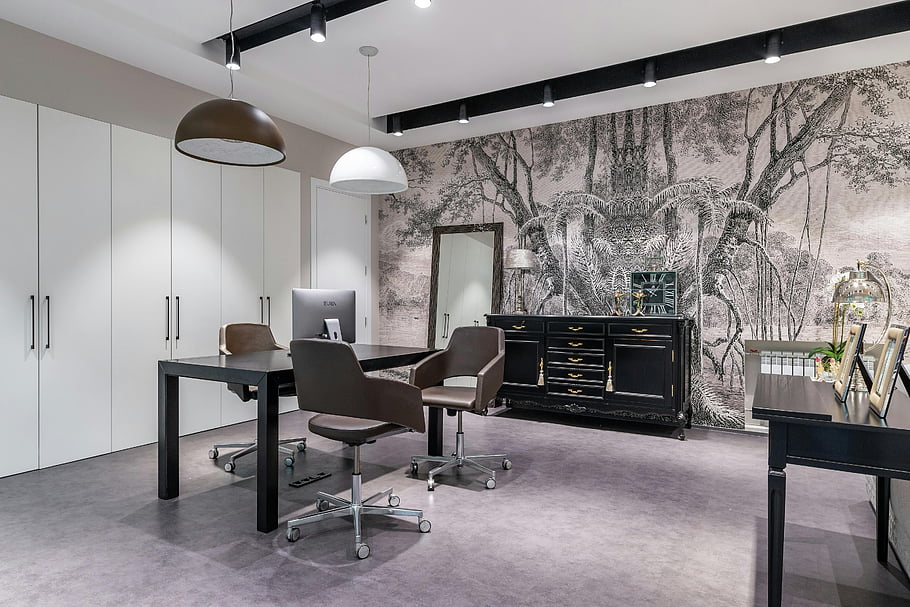Working from home has become the norm for millions across the world, especially in TIER-1 countries like the US, UK, Canada, and Australia. But while working from the comfort of home sounds like a dream, it can quickly turn into a nightmare if your workspace isn’t designed thoughtfully.
Your home office should inspire productivity, keep distractions at bay, and support your mental well-being. From choosing the right location to setting up ergonomic furniture, every detail counts. If you’re ready to design a productive home office that helps you get more done (and enjoy the process!), this guide will walk you through every step.
Why a Well-Designed Home Office Matters
Before we dive into practical tips, let’s talk about why home office design is so important. A poorly planned workspace can lead to distractions, poor posture, fatigue, and even burnout. On the other hand, a productive home office can help you stay focused, feel organized, and strike a healthy work-life balance.
In a world where remote work is here to stay, investing in your workspace is investing in yourself.
Choose the Right Location
The first step to designing a productive home office is choosing the right spot in your home.
If possible, pick a room with a door that you can close. This creates a clear boundary between work and personal life. A spare bedroom, attic, or basement can be transformed into a dedicated office. If you don’t have a separate room, find a quiet corner away from high-traffic areas like the kitchen or living room.
Natural light is a huge plus. A window not only brightens up the room but can boost your mood and energy levels. Position your desk near the window, but be mindful of glare on your screen.
Plan Your Layout for Efficiency
Once you’ve chosen the perfect spot, it’s time to plan the layout.
Think about how you work best. Do you need a large desk for multiple monitors and paperwork? Or do you prefer a minimal setup with just a laptop? Arrange your furniture so you can move around comfortably without feeling cramped.
Keep the essentials within arm’s reach: your computer, notepad, pens, and frequently used files. A clutter-free desk is key to maintaining focus and reducing stress.
Invest in Ergonomic Furniture
One of the biggest mistakes remote workers make is overlooking ergonomics.
Sitting in a dining chair for eight hours might seem fine at first, but you’ll quickly feel the strain in your back, neck, and shoulders.
Invest in a good ergonomic office chair that supports your lower back and encourages good posture. Pair it with a desk at the right height so your elbows are at a 90-degree angle when typing.
If you can, consider a sit-stand desk that lets you switch between sitting and standing throughout the day. This can help reduce fatigue and improve circulation.
Optimize Lighting for Comfort and Focus
Lighting plays a huge role in your productivity and well-being.
Natural light is the best option, but you’ll likely need additional lighting, especially during darker months.
Use a combination of ambient, task, and accent lighting. A good desk lamp with adjustable brightness can reduce eye strain when reading or working at night. Position your light source to the side of your screen to avoid glare.
Declutter and Organize Your Space
A messy desk is a productivity killer.
Use shelves, cabinets, and drawers to store paperwork and supplies. Desktop organizers, cable management solutions, and file holders can keep your workspace tidy.
Go digital where possible. Use cloud storage to minimize physical files and reduce clutter. Remember, a clean workspace equals a clear mind.
Add Personal Touches Without Distraction
While minimalism works for some, adding personal touches can make your home office feel welcoming and inspiring.
Hang artwork that motivates you, display a few framed photos, or add a plant for a touch of greenery. Studies show that indoor plants can improve air quality and boost concentration.
Just avoid overcrowding your space with too many knick-knacks that might become distractions.
Minimize Distractions
Design your space to minimize interruptions.
Use noise-canceling headphones if you live in a noisy household. Place your desk so your back isn’t to the door—this reduces the chance of surprise interruptions.
Consider adding a white noise machine or playing ambient music to help you stay in the zone.
Take Care of Tech Needs
A productive home office needs reliable tech.
Make sure you have a strong internet connection—consider a wired connection for better stability during video calls. Invest in quality headphones, a webcam, and a microphone if your job involves frequent meetings.
Keep chargers, power strips, and extension cords handy but organized. Label your cables to avoid confusion later.
Don’t Forget About Comfort
While productivity is key, comfort matters too.
Add a cozy rug to warm up the room. Keep a blanket nearby for chilly days. If space allows, include a comfy chair or small sofa for breaks or brainstorming sessions.
These small touches can make your office feel like a space you enjoy spending time in, which naturally boosts productivity.
Use Color to Boost Your Mood
Did you know that color can influence your mood and energy levels?
Soft blues and greens are known for their calming effects, while pops of yellow can spark creativity. Choose a color palette that motivates you without being overwhelming.
If repainting isn’t an option, add color through accessories like cushions, wall art, or desk decor.
Establish Clear Work Boundaries
Even the best-designed home office won’t make you productive if you don’t set boundaries.
Create a daily routine. Start and end work at the same time every day. Let your family or housemates know your working hours to minimize interruptions.
When your workday ends, shut down your computer and leave the workspace. This helps your brain switch off from work mode and prevents burnout.
Regularly Refresh and Reassess
Your needs might change over time, so it’s important to reassess your setup regularly.
Does your chair still feel comfortable? Are you getting enough light? Is clutter creeping back in? Make small changes as needed to keep your workspace fresh and functional.
Remember, designing a productive home office isn’t a one-and-done task—it evolves with you.
Final Thoughts
Creating a productive home office takes thought and intention. But the payoff is worth it: you’ll work more efficiently, feel more comfortable, and maintain a healthier work-life balance.
Choose a quiet spot, invest in ergonomic furniture, optimize lighting, keep clutter at bay, and don’t forget to personalize your space so you actually want to spend time in it.
Ready to transform your work-from-home experience? Start designing your ideal home office today—your productivity and well-being will thank you for it.
Take action now: assess your current setup and pick one thing you can improve this week. A more productive, inspiring home office is just a few changes away!






